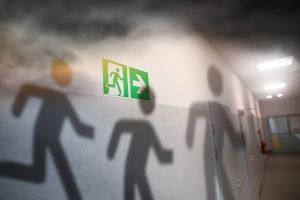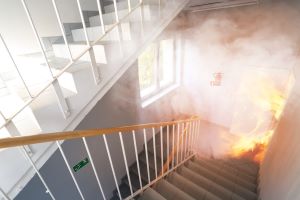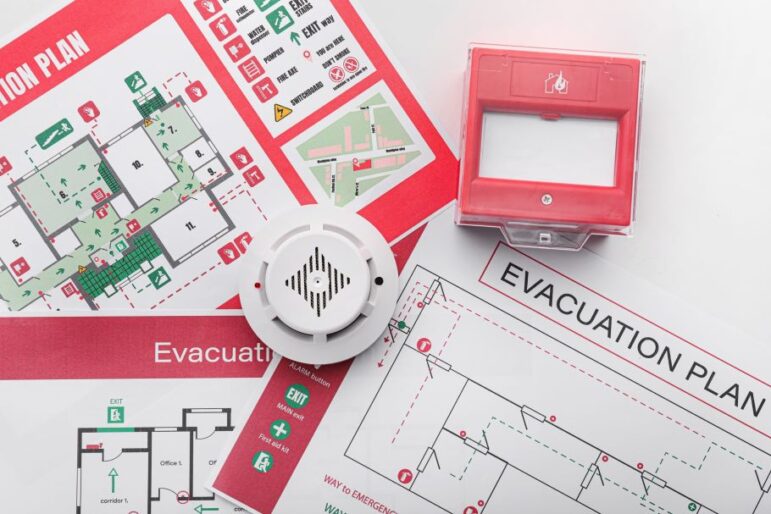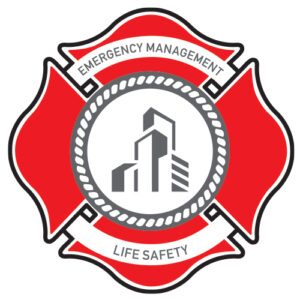When a fire broke out at 2 Forest Laneway in North York on January 6, 1995, most residents were still sleeping. The fire began at 5 a.m. in an apartment on the fifth floor and spread quickly. Six people died, all overcome by smoke and found in the upper levels of the two stairwells of the 365-unit building.
A study by the National Research Council of Canada determined that of those living above the fifth floor, “only those leaving their units at a very early time had a chance of reaching ground level safely.” The study found that many occupants had not received appropriate fire safety information. With eleven false alarms sounding the previous year, residents weren’t even sure if they should take the alarm seriously. Some made breakfast and watched TV.
The tragic fire prompted a coroner’s inquest which identified a failure on the building owner to train building staff on their roles and responsibilities under the Fire Safety Plan, including being able to effectively use the building’s emergency voice communications system. In addition, it found that security guard “emergency procedures” differed from the building’s approved Fire Safety Plan procedures. As a result, the Fire Safety Plan’s correct procedures were not followed. Following the fire, a total of 65 recommendations were made by the coroner’s inquest. Number two on their list was the recommendation to ensure that all Security/Superintendents and building staff received mandatory training on a building’s Fire Safety Plan.
A Fire Safety Plan explains emergency procedures and inspections the building must complete in order to meet the Ontario Fire Code. The Chief Fire Official of the local Fire Department must approve a condominium’s Fire Safety Plan. Once approved, its implementation is a Code requirement of the Condominium Corporation.

“The Fire Code requires each staff member working at the building to know their Fire Safety Plan,” says Jason Reid, Senior Advisor of Fire, Safety and Emergency Management for National Life Safety Group. “Every condominium manager, every superintendent, every concierge and all security personnel are required to have training on the building’s approved plan, prior to being assigned responsibilities.”
Although the requirement to train building staff has been active for years, until recently, no accredited training was available. National Life Safety Group (NLSG) now offers the first accredited training certification for managers, staff and owners of multi-residential buildings. Their program ‘Implementing a Residential Fire Safety Plan’ is accredited and endorsed by the Institution of Fire Engineers (IFE) Canada Branch to meet the Ontario Fire Code. The 3-hour certificate program is developed and delivered by NFPA recognized Fire and Life Safety Educators specifically for condominium managers and staff who work at buildings. For licensed condominium managers, the training is recognized by the Condominium Management Regulatory Authority of Ontario (CMRAO) and counts towards 3 CPE credits. NLSG’s courses are designed for high-rise, mid to low rise, and townhome communities.
“It’s the only accredited program in the province of Ontario,” explains Reid, who notes that the lack of accredited training modules leaves buildings vulnerable both during and after the emergency. “We find that training, if completed, isn’t meeting the standards, and is blatantly wrong in some areas. In several cases, security guards at the front desk are using emergency procedures and building announcements that they have been instructed to perform from their security supervisor, or at times the building management, and even the Board. This often contradicts what was approved in the Fire Safety Plan approved by the local fire department. When they say or do anything else, lives could be at stake.”
According to the Office of the Fire Marshal, 133 people died in fires in the province of Ontario last year. In high-rises, residents will sometimes hear the announcement but choose to stay in their suites, then try to leave minutes after the alarm goes off. “By that time, smoke is already in the building,” Reid explains. “Residents have options, and they need to know and understand those options before the next fire alarm.”

To build on essential life safety training in multi-residential buildings, NLSG has developed two further instructional courses: ‘Resident Fire Safety & Awareness Training’ is designed for residents of high-rise buildings to educate them on all aspects of fire safety and their own responsibilities in the event of a fire. A further certificate program from NLSG, ‘Condominium Risk Management & the Fire Code’ is designed for Directors and Administrators of condominiums, to allow Boards to be educated on the fire code requirements for their building.
Each Fire Safety Plan typically includes a detailed handout which should be sent out to residents. “The handout explains what the front-line staff will do during fire emergencies,” says Reid. “It also explains what the residents should do. The only way to fully implement the plan, as required by code, is to ensure all parties having roles and responsibilities in that plan, are made aware of those roles and responsibilities.”
Informing all staff of the procedures to be followed is also part of the Occupational Health and Safety Act (OHSA) for every employee of a condominium. Reid asserts that the Fire Safety Plan is an informational tool which can save lives – but only if they all know about it.
“To ensure that the life safety systems are fully functioning, Security staff or Superintendents are required to complete daily inspections of the fire alarm system in condominiums. They’re required to check and inspect the sprinkler system and the generator every seven days, and they must also perform a full building inspection every 30 days. These fire code requirements are outlined in your building’s approved Fire Safety Plan. A plan helps you comply with the Ontario Fire Code; it has everything you need and acts as the staff’s training curriculum.”

Ongoing education for building staff is required for high-rise buildings through fire drills with their staff every three months, yet many buildings are unaware of how to conduct and document these drills. Through NLSG’s accredited training, building staff and managers can understand each other’s roles and responsibilities, ensuring compliance to the Ontario Fire Code, and be confident in case of an emergency.
To book your accredited training certification, or to learn more, visit www.nationallifesafetygroup.ca or contact solutions@nationallifesafetygroup.ca




